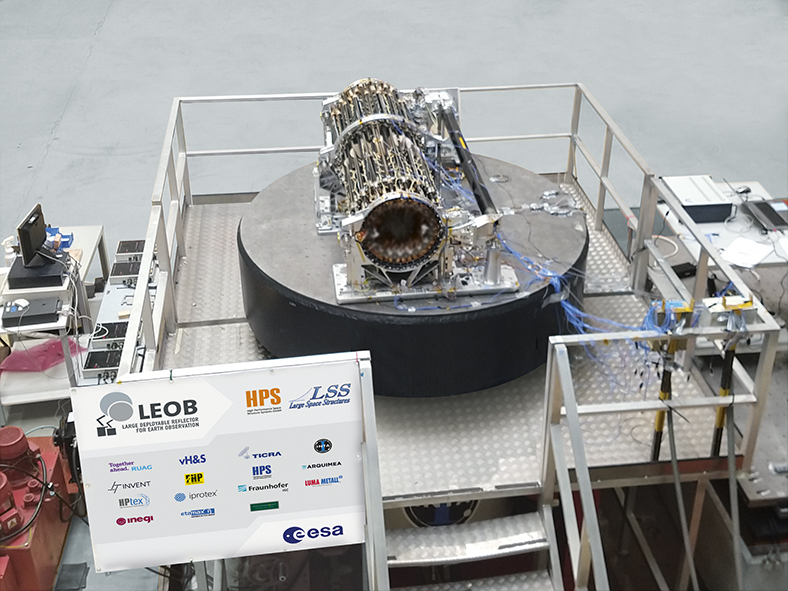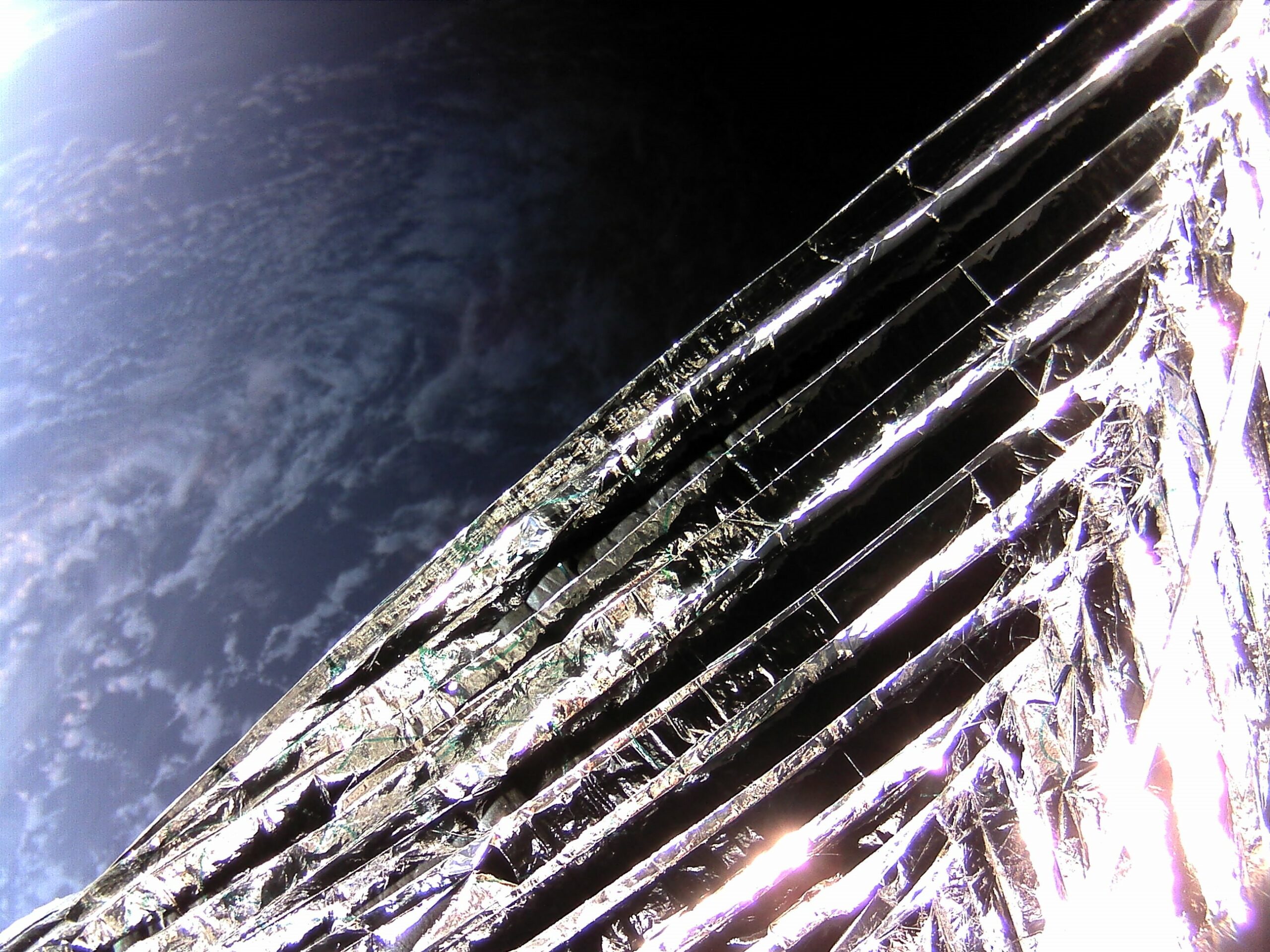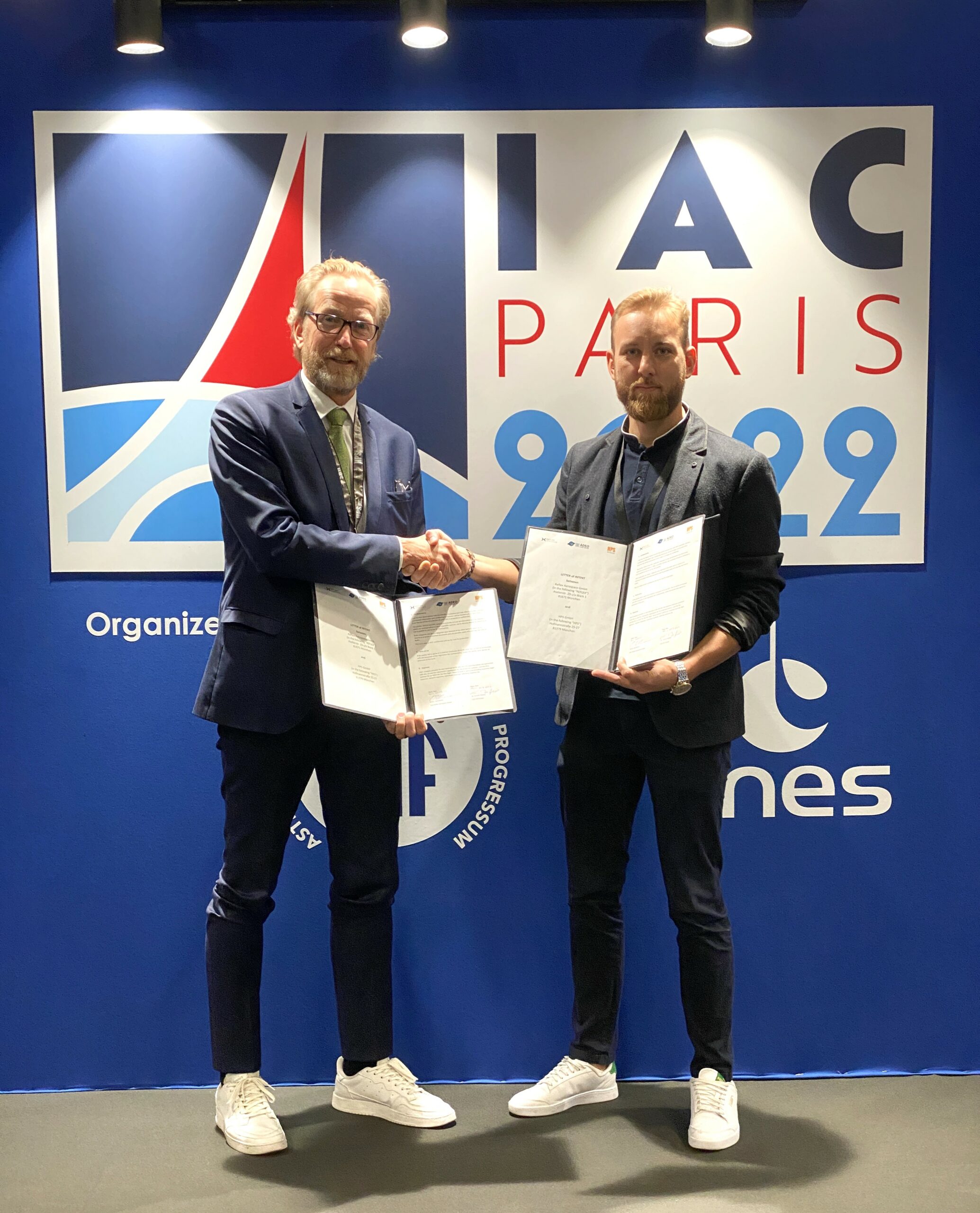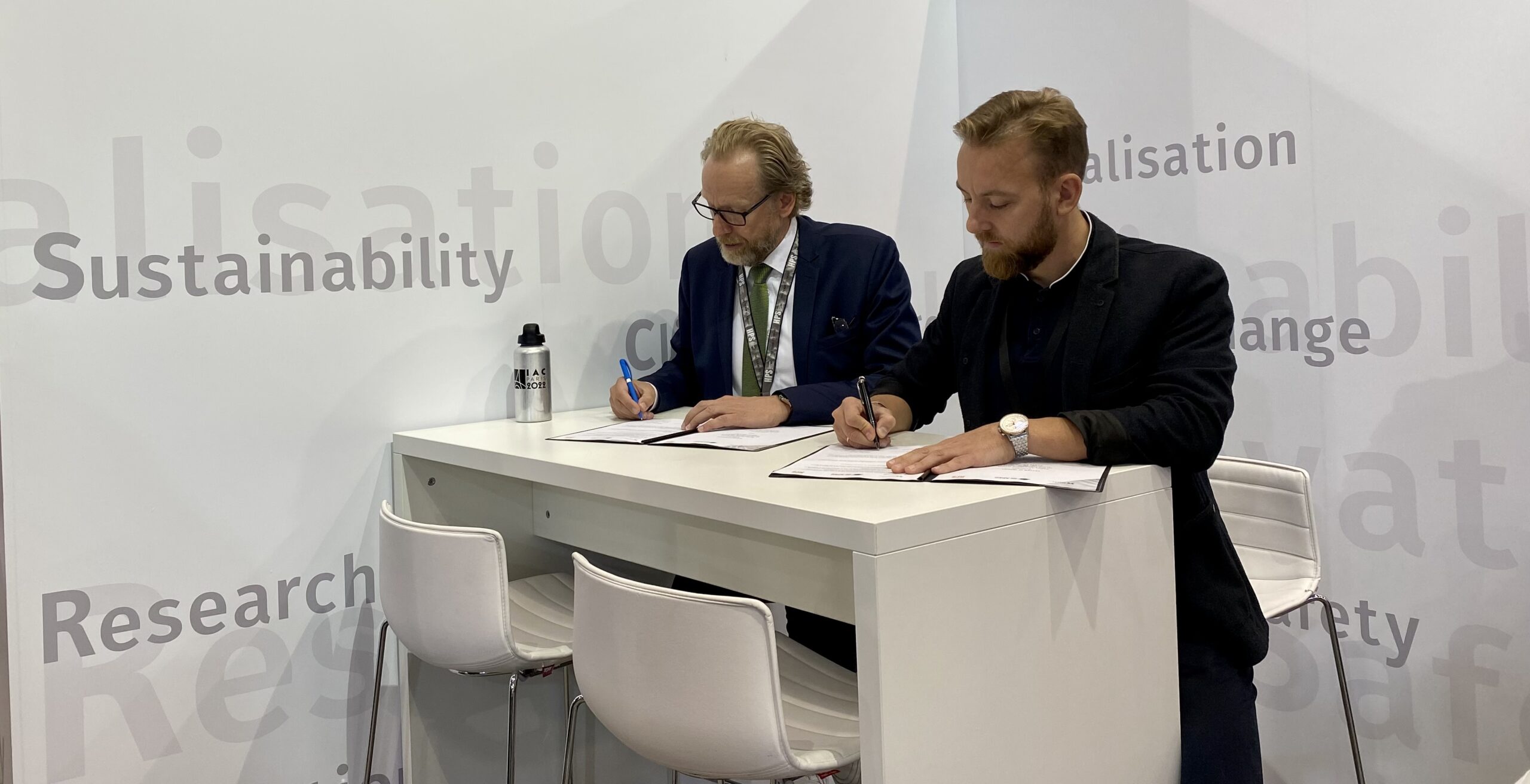Dezember 2022
HPS Space News
Qualifikationserfolg für HPS im All: Kleinste Version des ADEO-Bremssegels erfolgreich entfaltet
Seit nunmehr 16 Monaten umkreist ein ION-Satellitenträger des italienischen Dienstleisters für unbemannten Raumtransport D-Orbit die Erde im niedrigen Orbit. Gestartet von einer Falcon 9 am 30. Juni 2021, hat er nach dem Missionsstart der Hightech-Passagiere aus elf Ländern nur noch eine letzte Aufgabe: mit Hilfe des autonomen Bremssegels ADEO des Münchner Raumfahrtunternehmens HPS in kürzester Zeit sanft wie auf „Engelsflügeln“ an den Rand der Erdatmosphäre zu segeln um dort rückstandslos zu verglühen.
Das Testmodell ist die kleinste Variante der ADEO-Produktfamilie mit einem Gewicht von 800 Gramm, einem Packmaß von 10x10x10 cm und einer entfalteten Segelfläche von 3,6 Quadratmetern. Diese Mission von ADEO „Show me your Wings“ ist nun der letzte Proof-of-Concept in einer Serie, die auch einen ersten Flug mit der Electron von Rocket Lab im Jahr 2018 und mehrere Parabelflüge von 2019 bis 2022 umfasste.
Nach dem Ende der nominalen ION-Mission namens „Wild Ride“ entfaltete sich jetzt das ADEO-Bremssegel erstmals vor den „Augen“ der integrierten Kamera und leitete sofort den Sinkflug („Deorbit“) ein. ADEO schließt den Deorbit viele Jahre schneller ab als die derzeit noch weit verbreiteten „ungebremsten“ Satelliten und räumt seine Betriebsposition im Orbit entsprechend früher für einen neuen Satelliten, was auch eine unkontrollierte Verschmutzung des Weltraums durch Kollisionstrümmer verhindert. Darüber hinaus trägt ADEO dazu bei, die Betriebszeit des Satelliten zu verlängern, da das Segel den Abstieg auch dann noch bewältigt, wenn der Satellit keinen Strom und keinen Antrieb mehr haben sollte.
Die für das Deorbiting benötigte Zeit wird bei dieser Mission übrigens genau gemessen, so dass sie für eine eventuell notwendige Neukalibrierung des HPS-Deorbit-Timers verwendet werden kann. Es handelt sich um ein weltweit einzigartiges Berechnungsprogramm zur Vorhersage der Deorbit-Zeiten aller möglichen Satelliten mit und ohne ADEO-Bremssegel. Die theoretisch entwickelten mathematischen Algorithmen des Rechners werden dabei durch empirisch gewonnene Daten aus dem Feld differentiell verfeinert. Der ADEO Deorbit Timer ist ein wertvoller Service für HPS-Kunden aus aller Welt.
Die Serienproduktion der ADEO-Versionen für alle Satellitenklassen mit Flughöhen unter 900 Kilometern ist bei HPS in München und Bukarest (Rumänien) in vollem Gange. Erste Unternehmen wie das NewSpace-Startup Reflex Aerospace (Berlin und München) haben bereits Absichtserklärungen für die Ausstattung ihrer gesamten zukünftigen Satellitenflotte mit ADEO unterzeichnet oder angekündigt, dies in Kürze zu tun. Andere wiederum, wie die Berliner BST, integrieren ADEO als Standardoption in ihre Angebote an Kunden. Ein zusätzlicher Nachfrageschub wurde im Herbst 2022 durch die Ankündigung der internationalen Politik ausgelöst, die Deorbit-Zeiten der Satelliten aufgrund der extrem gestiegenen Nutzungsdichte auf allen Orbits drastisch auf 5 Jahre zu verkürzen und eine entsprechende Zusatzausrüstung gesetzlich vorzuschreiben.
Der extrem scharfe Bildbeweis für die erfolgreiche Entfaltung eröffnet nun ein neues Kapitel in der Geschichte von HPS, dazu sagt HPS-CEO Ernst K. Pfeiffer: „Und wieder konnte ein neues Kapitel eines programmatischen Erfolgs geschrieben werden, welches nur durch vertrauensvolle Partnerschaften der Raumfahrt möglich ist: Forschung und Entwicklung mit Instituten (wie das Fraunhofer Institut in Freiburg und das DLR in Bremen) im Früh- und Entwicklungsstadium, finanzielle Förderung durch den bayerischen Staat und die deutsche Raumfahrtagentur, ein starkes Engagement der ESA im GSTP Programm (ohne diese Unterstützung inklusive der Menschen dahinter, wären wir noch lange nicht soweit!!), die extrem engagierten Mitarbeiter meines NewSpace Teams und schließlich mit den Menschen der Systemfirmen, wie D-Orbit, die schlussendlich, das für unser nächstes Kapitel wichtige Bild des entfalteten Segels möglich gemacht haben. Ein großer Schritt für HPS, ein weiterer Schritt für eine nachhaltige Raumfahrt.“
ADEO – Contact: adeo@hps-gmbh.com
May 2022
Exciting new Partnership for Sustainable Use of Space
Paris-Munich-Berlin, September 19th, 2022. Today satellite manufacturer Reflex Aerospace (Munich/Berlin) and space-tech company HPS (Munich), signed a letter of intent that will set the pace in striving for a sustainable use of space, through the prevention of space debris Reflex Aerospace is committed to removing all satellites from orbit after system end of life, and has chosen subsystem specialists HPS as its preferred partner to equip their satellites with ADEO sail-system as the deorbit system. The mission is clear, to ensure a safe and sustainable use of space for the foreseeable future. The two German Space players share a common goal in putting the European Commission´s “Green Deal”, ESA’s “Zero Debris Initiative” and the US “National Orbital Debris Implementation Plan” into practice.
The dragsail ADEO is available in three different versions, and covers all possible shapes and sizes of satellites active on orbital altitudes up to 900 kilometres. As a result, ADEO provides their system to over 90 percent of all constellations that are currently in planning. Partnering with ADEO underlines Reflex’s ambition to foster sustainability in space and responsive space capabilities, creating additional value for their satellites and subsequently for their customers. The first step and first integration of an ADEO dragsail will be the Reflex Demonstration Mission planned for mid 2024.
The CEOs of both companies signed the agreement today, Walter Ballheimer for Reflex, and Dr. Ernst K. Pfeiffer on behalf of HPS. Following the signature, Walter Ballheimer said, “We know the satellite manufacturing business for a long time, and from a mere business perspective one can understand that some of our competitors hesitate to invest in sustainability, if that affects rentability. Our view is, however, that this is short sighted and will inevitably lead to a situation where space endeavours become incredibly risky due to the amount of debris in the low earth orbit We don’t want to wait for this scenario to materialize, instead, we see it as a clear mandate for us and our customers to assume factual and ethical leadership in this matter.” Ernst Pfeiffer added: “Every breakthrough is a highly emotional moment, and this one now is certainly one of the most important ones in the history of our company. We started developing large deployable sail subsystems, originally with partners for the purpose of solar sailing ((i.e. DLR Institutes), back in the year 2000. It took over twenty years, uncountable hours of work done by the best engineers in the field, as well as sweat and tears when the project ran more than once into dangerous waters concerning its long-term financing. We are glad and thankful that over the decades we received so much support from people and institutions who never stopped believing in our final success. DLR and ESA have to be mentioned here in their role as most important strategic investors. This step together with Reflex Aerospace justifies the worthiness of all that effort and shows that ADEO will make its way as the central tool in keeping space save and sustainable.”
For more detailed information on ADEO see: https://www.hps-gmbh.com/en/portfolio/adeo-angel-on-wings/
For more detailed information on Reflex Aerospace see: https://www.reflexaerospace.com/
September 2022
UNIO will equip all their European constellation satellites with ADEO
UNIO Enterprise GmbH, THE European NEWSpace System house for satellite constellations made in Germany, founded by ISAR Aerospace, Mynaric, Reflex Aerospace and SES S.A has confirmed to equip all their European constellation satellites with the ADEO dragsail module: https://unio.global/.
ADEO will accelerate the decommission of the satellites and prevents space from getting polluted by debris even before it occurs.
We feel honored to have been selected as a partner for space sustainability by this meanwhile famous European NewSpace system house: To us at HPS, this is inspiration and motivation to carry on driving the idea of space sustainability to its technological extremes.
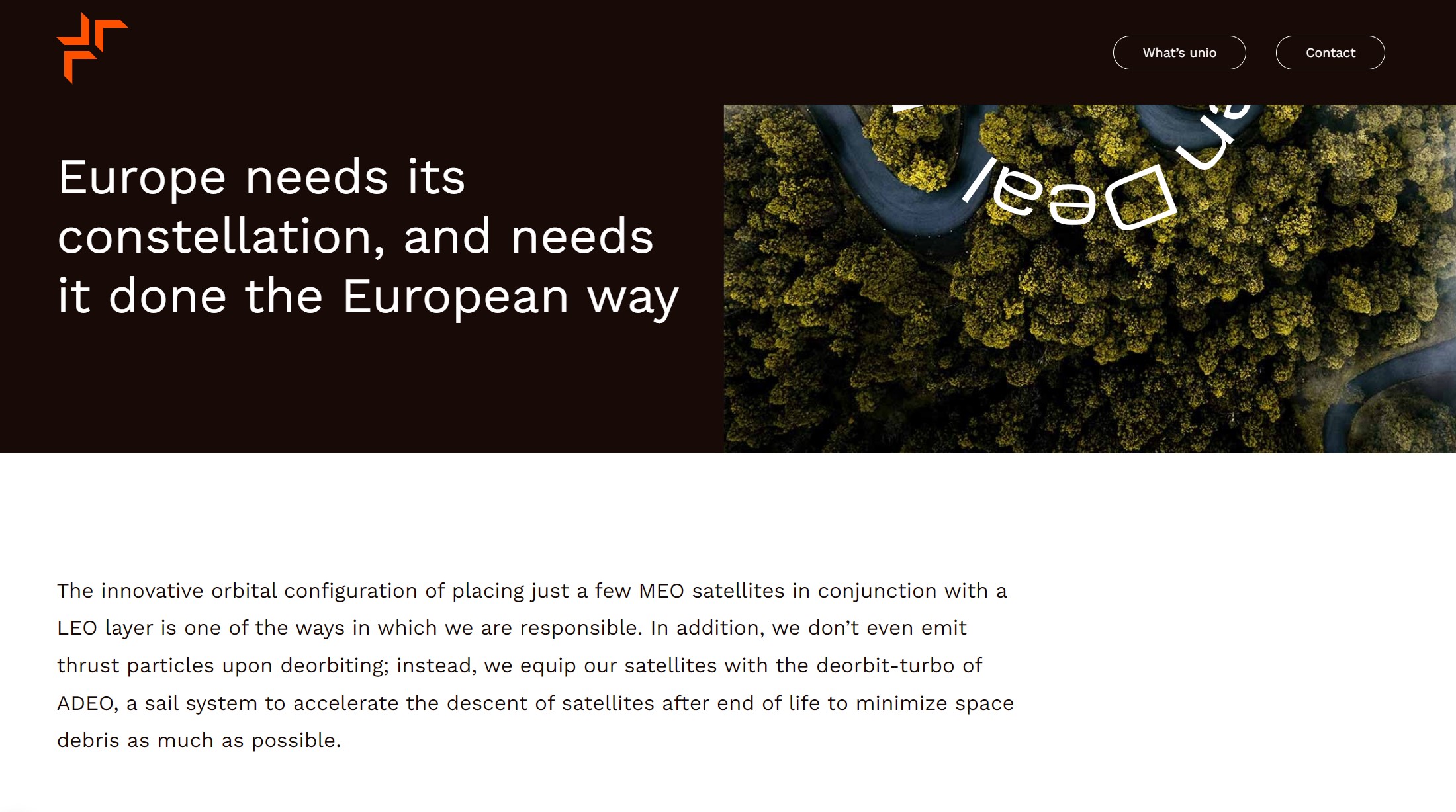
August 2022
Creating sustainable use of space, with strong support from the world´s leading nations
Deorbit-systems to speed up sailing satellites down from orbits to become a decisive cornerstone in creating sustainable use of space, with strong support from the world´s leading nations.
ADEO, the world´s leading autonomous deorbit system, will also guide yours sat on angel wings to nirvana when its time has come to give room to newcomers!
Please also read political standpoints here:
https://www.whitehouse.gov/wp-content/uploads/2022/07/07-2022-NATIONAL-ORBITAL-DEBRIS-IMPLEMENTATION-PLAN.pdf
and here
REGULATION (EU) 2021/696 OF THE EUROPEAN PARLIAMENT AND OF THE COUNCIL
of 28 April 2021
establishing the Union Space Programme and the European Union Agency for the Space Programme and repealing Regulations (EU) No 912/2010, (EU) No 1285/2013 and (EU) No 377/2014 and Decision No 541/2014/EU
and here
SECURE WORLD FOUNDATION
Statement under Agenda Item – 8. Space Debris
February 2022
Fifty-ninth Session of the Scientific and Technical Subcommittee of the United Nations Committee on the Peaceful Uses of Outer Space
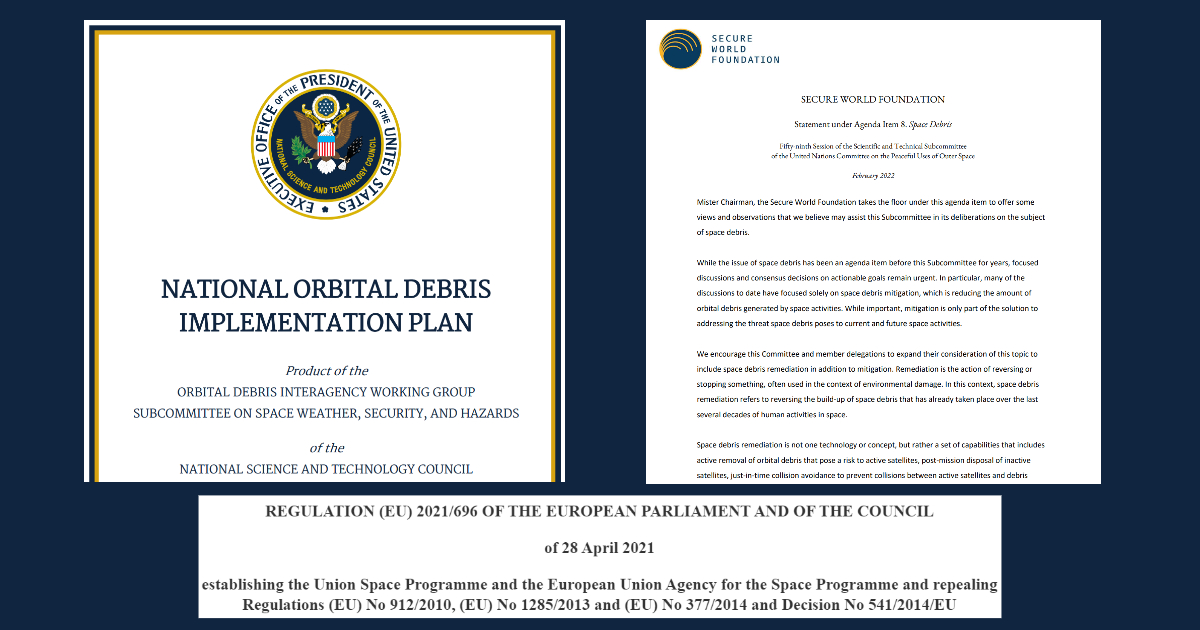
August 2022
ADEO deorbit sail product family continues to grow: Successful financing round for industrialization of ADEO Medium for constellation satellites
Paris-Munich. August 1, 2022.
Just one last signature, and the success story of the almost decade-long development of the European deorbit sail ADEO by HPS is going to find its seamless continuation: the model ADEO M for medium satellites of 100-700 kilo weight on orbits up to 900 km altitude – so, typical representatives of the currently almost exponentially growing constellation projects – will be made fit for series production and distribution on the commercial market by the HPS Group in Germany and Romania.
Parallely, additional features of ADEO N (Nano) will be developed. ADEO M follows the versions ADEO N and ADEO L (Large), which have already been on the market for 1.5 years. With the third model, HPS now closes the last gap in its product portfolio and addresses in particular the booming NewSpace market thanks to maturity level TRL 9 and growing flight heritage on missions of various carriers with world-leading deorbit automatic.
This leadership is also a result of the steady and now renewed support from Europe’s GSTP technology program and its German SME initiative on the part of ESA and DLR Space Agency. „Everyone is talking about space debris; thanks also to ESA´s “Zero Debris Initiative”, with ADEO, our customers are making sure it doesn’t even happen.
This is the only way a clean-green mission works, the only way the EU’s Green Deal becomes a reality also in space.“
For each satellite on LEO there is a suitable ADEO, which accelerates deorbiting by a factor of about 20. All interested companies get the exact forecast free of charge and super fast; all they have to do is feed our globally unique „ADEO deorbit timer“ with the data of their satellite and then let the algorithms do their jobs,“ says HPS CEO Dr. Ernst K. Pfeiffer. As in the case of ADEO N and ADEO L, already now orders for new satellite projects are also being accepted for ADEO M, shortly before the start of series production, in order to harmonize planning and production processes on both the HPS and the customer sides.
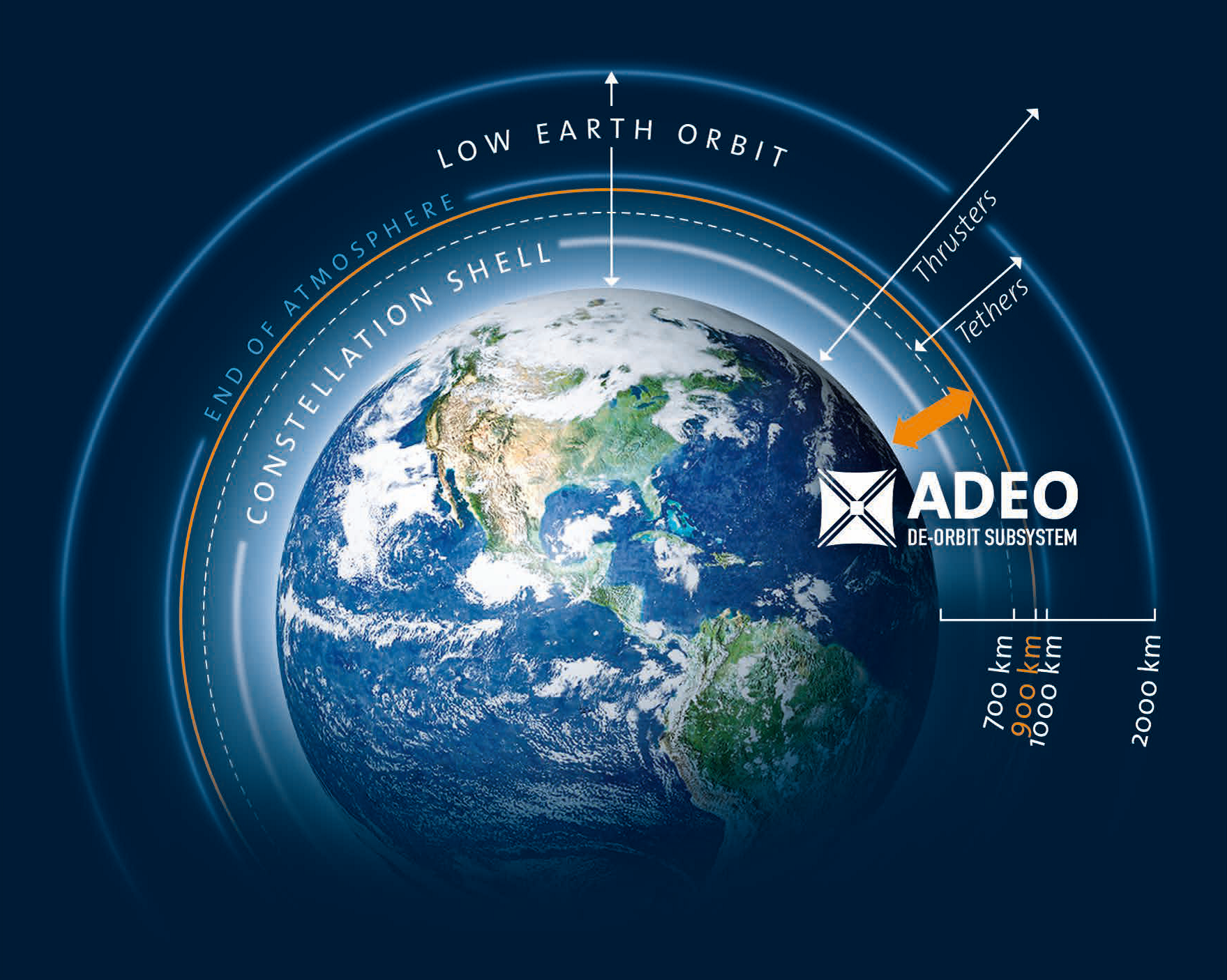
Juli 2022
Flug von ADEO-N3 am Ende des Jahres 2022
In der Hoch-Zeit der Sommerferien herrscht bei HPS in München Hochdruck in den Vorbereitungen für die dritte Mission des innovativen Weltraumbremssegels ADEO, welches sich automatisch am Ende der Mission entfaltet und „seinen“ Satelliten bis zu 20-mal schneller zum Verglühen in die Atmosphäre treibt. So wird Schrott vermieden und Raumfahrt nachhaltig.
Schon Ende August wird es in Italien zur Montage auf dem ION „Satellite Carrier“, D-Orbit´s „orbital transfer vehicle (OTV)“ angeliefert. Es ist die ADEO-N-Version für Kleinsatelliten mit einer Segelfläche von 5 qm.
Gegen Ende 2022 wird eine Falcon 9 Rakete von SpaceX den Satelliten in einen Orbit mit Mittlerer-Inklination bringen. Mit der bis Ende des Jahres dann angesammelten Flight Heritage wird ADEO 2023 in ein neues Raumfahrt-Zeitalter starten.
Denn zumindest für europäische Missionen bzw. Missionen von Europa aus wird es dann in aller Wahrscheinlichkeit keine Starts mehr ohne Deorbit-Tech an Bord mehr geben:
Der Green Deal der EU gilt dann auch für clean-green missions im Raum.
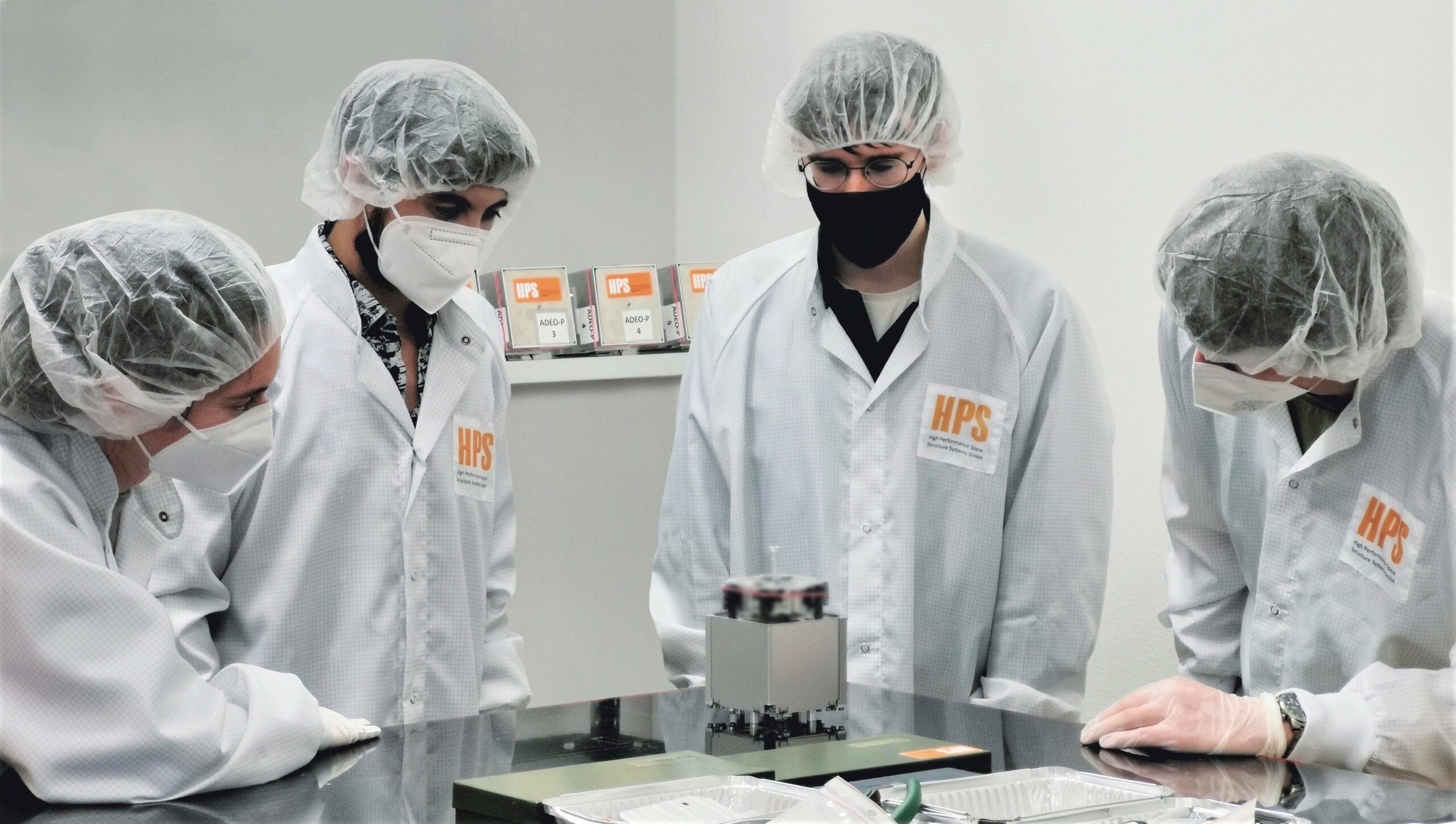
June 2022
Breaking News: ADEO dragsail by HPS as standard deorbit device for „Reflex Aerospace satellites“
Next milestone in commercializing ADEO dragsail for deorbit:
Reflex Aerospace (supplier of tailor made, high performance small satellite platforms) announces to use the automatic ADEO dragsail by HPS as standard deorbit device for their satellites. ADEO will guarantee a maximum deorbiting time of less than 5 years and contribute to Reflex Aerospace´s philosophy of responsible, sustainable and future-oriented space missions. Together we realize CleanGreen Space missions!
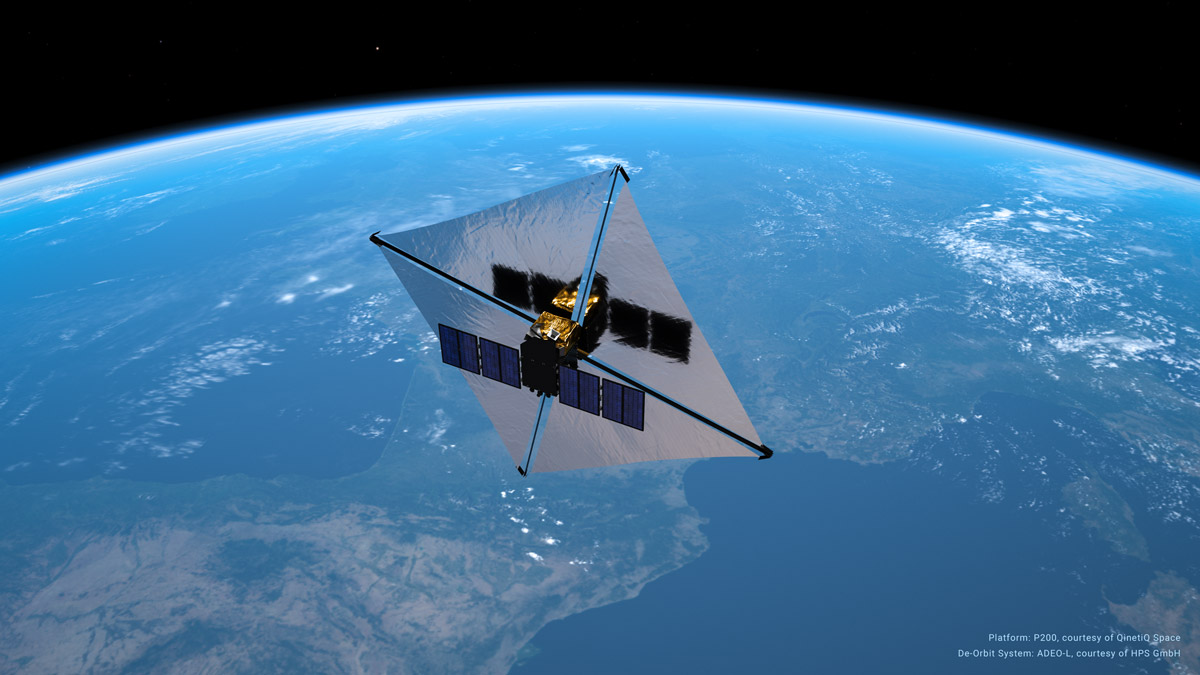
Erfolgsstory mit HPS an Board: EnMAP
May 2022
German Satellite EnMAP sends first pictures
The EnMAP hyperspectral imaging Satellite for VNIR/SWIR has successfully been launched on April 1st.
Now, the first images presented by Deutsches Zentrum für Luft- und Raumfahrt (DLR) demonstrates the excellent performance of the system.
HPS (DE) is proud of being on board of this great mission with the
- extremely light-weighted Telescope Baffle (as subcontractor to the Mission Prime OHB System) and with
- Thermal H/W for the Apperture Diffusor Mechanism (in contract to Beyond Gravity).
HPS contributed also partly with its structural and thermal #engineering expertise during various EnMAP Phases.
More information about the mission can be found on:
https://www.dlr.de/content/de/artikel/news/2022/02/20220504_deutscher-umweltsatellit-enmap-sendet-erste-bilder.html?fbclid=IwAR38A-lRFhXnyqKJMIq3cTEHmPyeyMwotOXBRxR_78S9ww8rnBIuJSi3o1I
More information about our product can be found on: https://www.hps-gmbh.com/portfolio/subsystem-integrals/lightweight-structures-2/
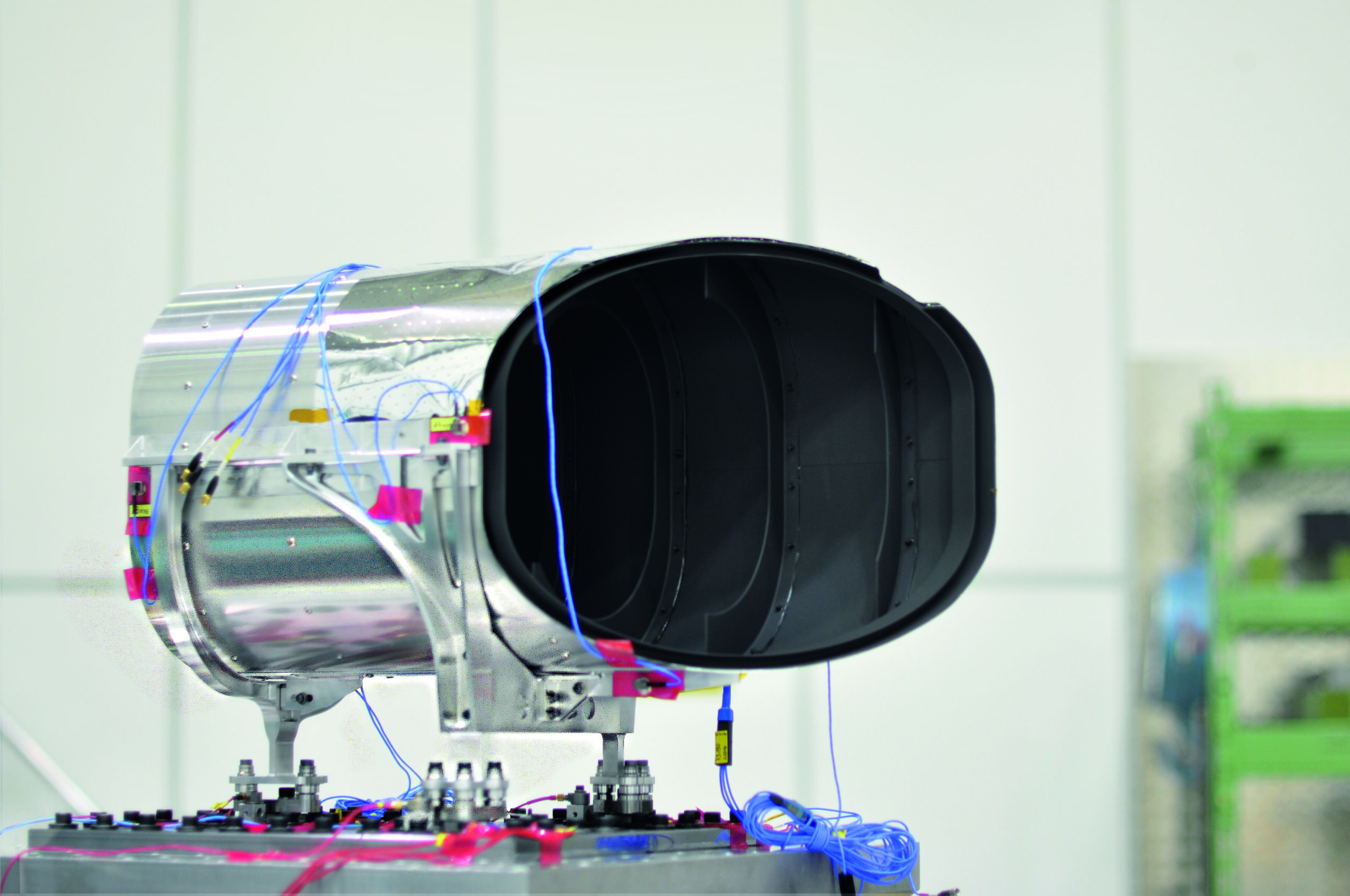

©DLR
March 2022
LDRS successfully passed the Requirements Review #2
Following, in 2021, the successful passing of both the Copernicus Imaging Microwave Radiometer (CIMR) System Requirements Review and the Large Deployable Reflector Subsystem (LDRS) TRL 5 Declaration milestones, our CIMR-LDRS team has now successfully passed, in March 2022, the LDRS Requirements Review #2. Design requirements for the Ka-band LDRS EQM are now frozen and the EQM detailed design can begin.
Upcoming major milestones in 2022 include both the LDRS ICD Freeze and the LDRS TRL 6 Declaration this Summer, followed by the LDRS PDR planned in Q4, 2022. An important part of the LDRS TRL 6 Declaration milestone is the successful execution of Environmental Test campaign of the 8m diameter LEOB-EM Deployable Reflector by our partner, LSS, being performed at INTA (SP) under the Prime Contract leadership of HPS. Random and Sine Vibration testing is complete and Thermal Vacuum testing is currently in-progress.
CIMR is part of the European Space Agency (ESA) Copernicus program and on CIMR, HPS-Germany is the Prime Contractor for the LDRS under direct contract to the Mission Prime, Thales Alenia Space-Italy. HPS is working closely with its partner, LSS, as the Large Deployable Reflector responsible, and 15 other subcontractors and suppliers from 7 European nations to produce the first-ever all-European LDRS.
